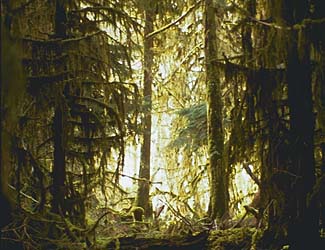 Home | About Us | How to Participate | Biodiversity Modules | Projects | Maps | News | Resources
NatureMapping Activities11. Habitat Association
Purpose: The major habitat codes are:
Teacher's Guide:
1. Using the general descriptions listed above, ask students what habitats would they expect to see a:
b. cougar c. woodpecker d. sea lion 2. Write their answers on the board and begin a discussion of need and use of habitats and how the uses may change throughout the year. For example, female sea lions looking for food for their babies stay close to their rookery, while males may travel up the coast thousands of miles in search of food. When the babies are able to swim, the females may travel farther distances away from their breeding areas.
3. Repeat for the rest of the species listed in #1
b. cougars have territories that change with the abundance of their food supply. Young cougars have to find their own territories and move great distances looking for them. They may be seen in unusual places while they are searching for their new homes. c. woodpeckers keep trees healthy by keeping the wood-boring insect numbers low. When the winter sets in, they may "migrate" to lower elevations, but still need the forest to survive. 4. Habitat association examples have been developed for multiple habitats within Washington state. Select five habitats and with the students discuss the different species' use of the habitat. There are species that are listed in multiple habitats (coyote, mallard, black bear, raccoon, and more). Select one species and visit each one of the habitats and discuss other species using the same habitats.
|